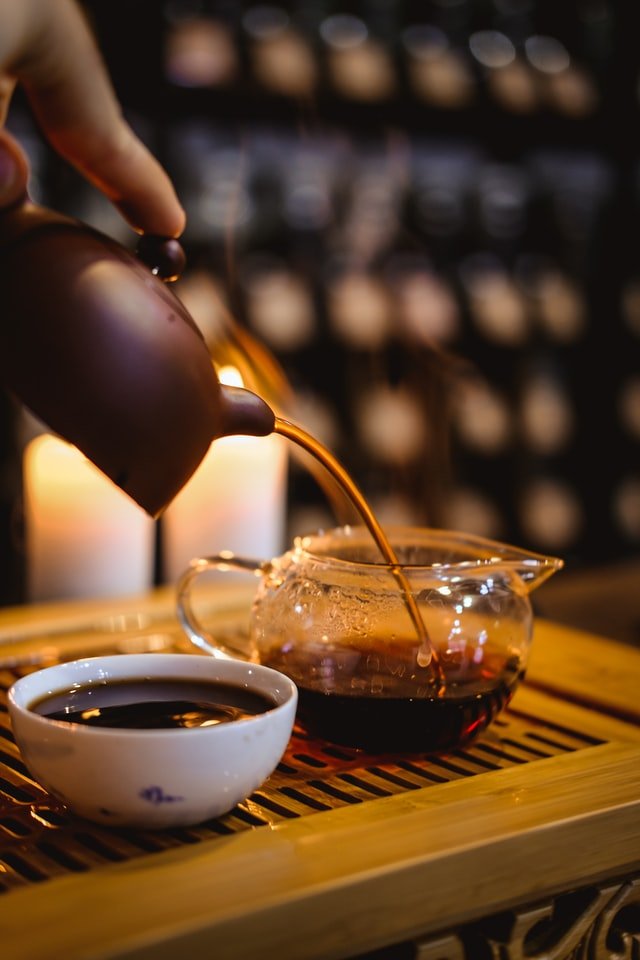
Did you know that tea is the most consumed beverage after water worldwide? Within its consumption, black tea stands out, at least in the West, where it is estimated that it occupies the first place on the list.
This infusion is prepared, like other varieties of tea, with the leaves of Camellia sinensis. However, in this case, during the tea making process, they undergo an oxidation phase so that they obtain the color, aroma and flavor that we are used to.
How to brew black tea properly
Before analyzing the steps to know how to prepare black tea in the best way, it is worth remembering that this variety is highly oxidized, a situation that produces that characteristic intensity and aroma. Precisely, it will be this oxidation process that will give it greater resistance to heat and durability.
Adapt the quantities to your variety
The first step is to determine which tea you will infuse. It is not the same to opt for a black tea in a bag than for a loose tea. In the case of buying bags due to their practicality and price, we recommend choosing those with a pyramidal shape that allow better circulation of the water inside, in order to extract their flavors and aromas to the maximum.
If, on the other hand, you have opted for loose tea, you should serve approximately 4 grams of black tea per cup (the amount will depend on the variety chosen). Remember: you should not go overboard with the quantity since, being a highly oxidized tea, its intensity could be too much for your palate.
Hot water, not boiling
Once you have chosen the tea, you must heat the water without letting it boil. Although in some places it is recommended to boil the water, we do not recommend it. Being a highly processed tea, it tolerates high temperatures better than other varieties such as white or green tea, however, excess heat could make your preparation bitter and water that is too cold may not extract all the benefits of this variety. The ideal is to use water at 90 – 95º C.
control the time
Third, it controls the infusion time. A very common mistake is to leave the tea in the water while we prepare breakfast, for example. Thus, we go beyond the recommended infusion time and we can end up with a bitter and too astringent tea.
It is considered that loose black tea should be infused for at least 60 seconds to allow the water to extract its benefits and aroma, and a maximum of 4 minutes to obtain its full flavor without bitterness. Of course, keep in mind that the longer the rest time, the greater the astringency.
How is black tea obtained?
After harvest, the tea leaves are air-dried before going through mechanical processes whose purpose is to lightly crush the leaves to facilitate oxidation processes.
In the case of higher quality teas, the process is carried out manually, while for tea bags and bulk teas of medium quality, the process is mechanical, using machines to tear, crush and roll the leaves.
After processing, the tea is stored in chambers with controlled humidity and temperatures to achieve the proper oxidation for each variety. It is worth noting that black tea undergoes complete oxidation and subsequent drying by air currents.
The most crushed leaves and tea powder will be used to prepare bagged black tea, the cheapest format that can be found in supermarkets, while the highest quality whole leaves will be sold in bulk.
The taste of black tea
Defining the flavor of black tea is not easy, precisely because there are so many varieties that differ not only in flavors but also in aromas. If we talk about origins, it is possible to taste Chinese, Indian, Kenyan and Turkish black teas, among others.
In general, we can say that black tea is characterized by its intensity, being able to find various nuances that are related to its denomination of origin, that is, to the place where it was grown (climatic conditions, soil and subsequent processing). Thus, it is possible to include within the black teas both Darjeeling, an infusion with a subtle flavor and floral aroma, Ceylon with its citrus hint or Assam, with its malty flavor, among other possibilities.
Smoked, fruity, citrus, floral, malted and even cocoa-like flavors can be found in the different varieties of black tea. Be careful, knowing how to prepare each variety of black tea is essential to respect its original flavor.
How to accompany black tea?

Did you know that each type of tea pairs better with certain foods than with others? Although it is true that in our day to day we do not pay attention to these details, you may be interested in taking it into account to prepare it for a special occasion.
Black tea, due to its intense flavor, usually goes well with meat and spicy dishes. Of course, this will change depending on the kind of black tea that we are going to drink. For stronger teas like Assam or Lapsang, smoked foods, fatty fish, braised meats, spicy dishes, and cold cuts will go better.
On the contrary, the more delicate classes such as Darjeeling are best served with creamy desserts. Another option? Use the tea to create original sauces to accompany your fish, meat and vegetables. No one will be able to resist them! You can even steep your cakes in tea to give them a simply irresistible moisture and zing.
